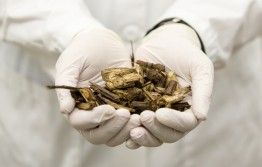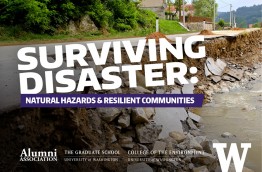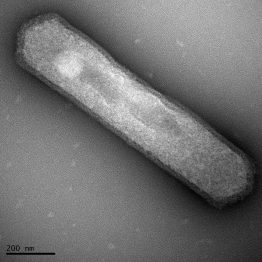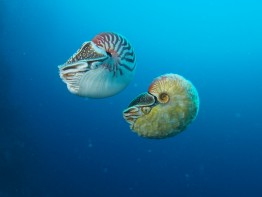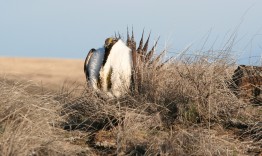Groves of poplar trees could one day fuel our vehicles and be the source of chemicals that we use in our daily lives. A five-year, $40 million study is laying the foundation for a Pacific Northwest industry that converts sustainably produced poplar feedstock into fuels and chemicals. The research, led by the University of Washington, will seed the world’s first wood-based cellulosic ethanol production facility.
Read more at UW Today »Surviving Disaster Speaker Series - register now!
The College of the Environment in partnership with The Graduate School and the UW Alumni Association is pleased to present the fall speaker series Surviving Disaster: Natural Hazards & Resilient Communities. Join us for a series of discussions centered around natural disasters — like earthquakes, tsunamis, landslides and hurricanes — and how they can affect the lives and livelihoods of people here in the Pacific Northwest and beyond.
Learn more and register »Lab experiments question popular measure of ancient ocean temperatures
Understanding the planet’s history is crucial if we are to predict its future. While some records are preserved in ice cores or tree rings, other records of the climate’s ancient past are buried deep inside the seafloor. An increasingly popular method to deduce historic sea surface temperatures uses sediment-entombed bodies of marine archaea, one of Earth’s most ancient and resilient creatures, as a 150-million-year record of ocean temperatures.
Read more at UW Today »Rare nautilus sighted for the first time in three decades by the College's Peter Ward
In early August, biologist Peter Ward returned from the South Pacific with news that he had encountered an old friend, one he hadn’t seen in three decades. A professor with the College of the Environment’s Earth & Space Sciences and the College of Arts and Sciences‘ Department of Biology, Ward had seen what he considers one of the world’s rarest animals: Allonautilus scrobiculatus.
Read more at UW Today »Power lines jeopardize Washington's threatened sage grouse population
Transmission lines that funnel power from hydroelectric dams and wind turbines across Eastern Washington impact sage grouse habitat by isolating fragile populations and limiting movement, a new study by the College of the Environment’s Climate Impacts Group and others finds. The paper looks at how features in the landscape limit the species’ distribution and gene flow, and is the first to show that power-line corridors are an obstacle for sage grouse as they move across the landscape to feed and reproduce.
Read more at UW Today »
